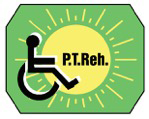


|
Current issue
Archive
Manuscripts accepted
About the journal
Editorial board
Reviewers
Abstracting and indexing
Contact
Instructions for authors
Publication charge
Ethical standards and procedures
Editorial System
Submit your Manuscript
|
3/2025
vol. 39 abstract:
Original paper
Change of direction profile in parabadminton: the role of impairment type and anthropometric factors
Adv Rehab.2025: 39(3): 40-52.
Online publish date: 2025/07/30
View
full text
Get citation
ENW EndNote
BIB JabRef, Mendeley
RIS Papers, Reference Manager, RefWorks, Zotero
AMA
APA
Chicago
Harvard
MLA
Vancouver
Introduction
Parabadminton (PBd), introduced at the 2020 Paralympics, accommodates athletes with diverse physical impairments, and differing degrees of physical and physiological performance. As such, there is a need for tailored assessments to refine classification procedures and training strategies. The aim of this study is to evaluate change of direction (COD) performance across sport classes and examine the influence of anthropometric factors on performance in PBd athletes. Material and methods The study included 79 PBd athletes, classified as wheelchair (WH1, WH2) or standing (SL3, SL4, SU5, SH6). All had official classifications and prior competition experience. Data collection included demographics, skinfold measurements, and arm muscle area (AMA) assessments. The COD test simulated gameplay to measure times, fatigue index, and mechanical power. Data from different sport classes were compared using the Kruskal-Wallis test and MANCOVA, controlling for covariates like age, body mass index (BMI), and practice time. Results Significant differences in COD performance were observed between sport classes, except for the fatigue index. Large effect sizes (f² ≥ 0.702) were found for worst time, mean time, and best time, with post hoc tests identifying multiple differences between wheelchair and standing classes. Smaller differences (f² = 0.058) were noted for total power, primarily between standing and wheelchair groups. MANCOVA analysis found BMI, height, practice time and AMA to be significant predictors of COD performance, depending on sport class and type of impairment. Conclusions Anthropometric factors, particularly height, age, body mass, and practice time, influence COD performance in PBd athletes. These findings highlight the relevance of sport class differences and underscore the need for training programs that address functional and physical distinctions. keywords:
paralympics sport, racket sport, sport classes, wheelchair sport |
    |